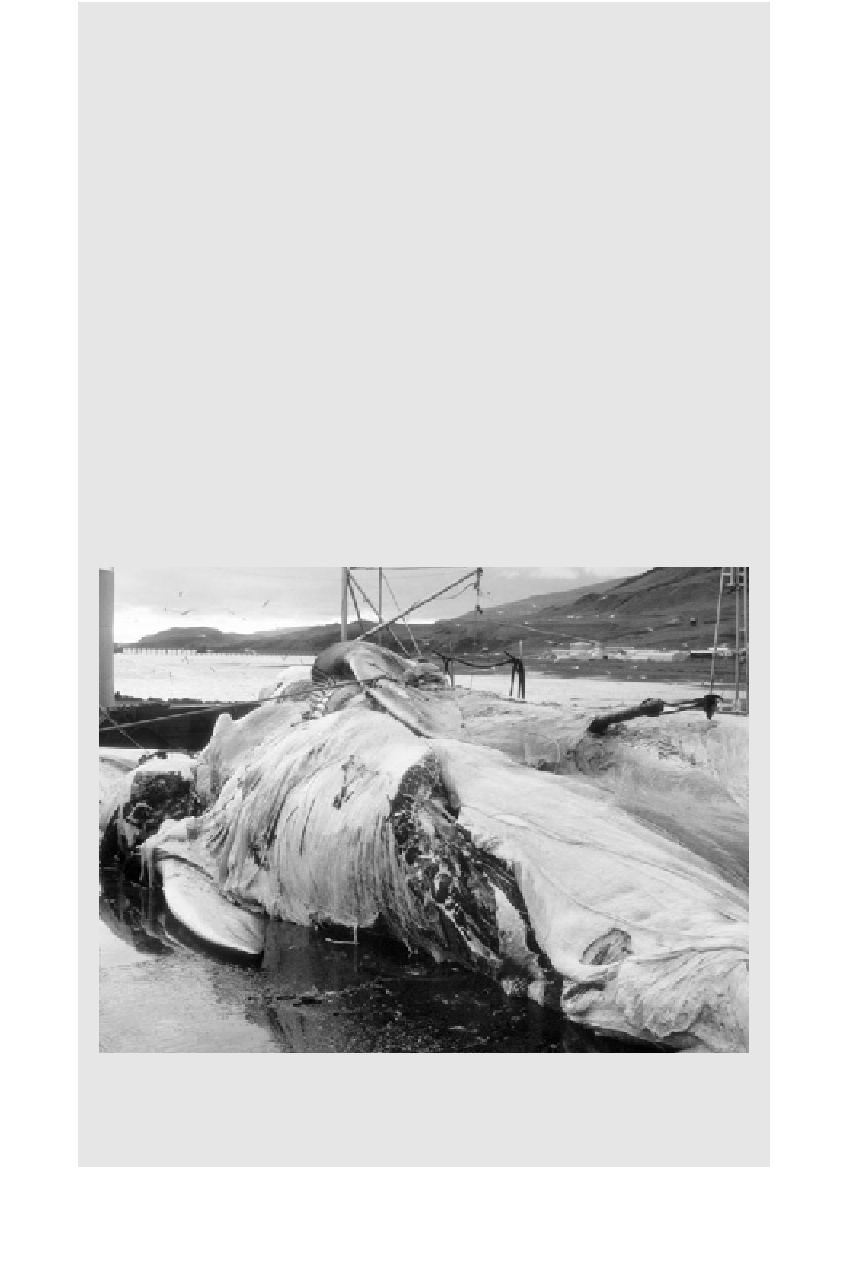Environmental Engineering Reference
In-Depth Information
Box 7.7
Innovative modelling for whales.
The Scientific Committee of the International Whaling Commission developed
an operating model for use in determining precautionary harvest limits should
commercial whaling recommence. They started by defining their objectives.
There was an over-riding constraint that for harvesting to occur, there should be
an acceptably low risk of whale numbers falling below 54% of carrying capacity.
Once this constraint was fulfilled, managers could maximise yield, but with vari-
ation in yield remaining relatively low.
The operating model includes a number of submodels. There is the population
model that generates the 'true' stock size, an observation model that transforms
the true stock size into the observed stock size, and then a management strategy
that determines the number of animals to be harvested based on the observed
stock size.
Five candidate management strategies were developed and tested in simulation
trials. These included base case trials, using best estimates of the state of the system,
and robustness trials, which were sensitivity analyses showing how the strategies
performed in a range of situations. The situations included biases in the catch data,
incorrect assumptions about the biology of the stock, incorrect starting population
Fig. 7.6
Whale carcass, Hvalfjordur whaling station, Iceland. This picture was
taken in 1983, when Iceland was still a member of the IWC. Photo © Michael
Moore, Woods Hole Oceanographic Institution.

